Interview
Interview: Isobelle Ouzman
In conversation with Isobelle Ouzman, a mixed media artist from Slovakia who works with ‘Altered Books’
Can you talk about your work’s focus on the book as a medium, and how you use existing books to create reimagined spaces?
I create Altered Books from discarded and donated hardback novels, journals, and sketchbooks, using a combination of illustration and paper cutting. By utilising books as a canvas I am able to develop three-dimensional scenes within the pages, using an art knife, glue, ink, colour pencils, and watercolours as my primary tools. Books are sometimes seen as a portal to another place, and altering them visually, has the potential to bring one of those distant places to life.
When did you start working with books as a medium and what was the catalyst for this?
I think my Altered Books are just the culmination of both my interest in stories and my environment over the years.
I began experimenting with books as a medium around 2012, after bringing home a very wet box of discarded novels from the street. I have always been a “bookworm” and an avid reader, so I feel my work is an extension of that. It’s sad to say, but mass produced, damaged, or unfavourable books, fill up our landfills every day. Altering them for art is an attempt to make these books mean something again, along with trying to use the symbolism behind them to emphasise the importance of stories, in general.
I have also been familiar with the print industry my entire life – my grandfather and father were screen printers, and I worked with my Dad from 2010-2017. I’m very interested in printed work and art, and how it is produced. I love careful, deliberate, layered work that has to be built up over time – like printing. My Altered Books are created in a similar way.
What themes are you exploring through your work?
My work often touches on themes of escapism through nature, as well as Folklore and Fairy Tales, which teach us about resilience, adversity, and strength – all aspects that are also reflected in nature. In addition to that, I think using books for art sparks important conversations about repurposing materials, and the place we hold for books now during a time of digitisation. But I’m mostly exploring escapism, I’d say.
(Can you tell us about the process of working with existing books – does this present limitations, or is it more liberating?)
The process for working with existing books is mostly unpredictable. Many of the novels and journals I receive to alter are in poor condition, and there are different types of paper, binding styles and size to consider as well, so my pieces require some flexibility. In the past there have been times where I’ve reached half way through an Altered Book and it falls apart completely, or the pages are just too difficult to carve and control. I think that’s part of the fun though, as I never know if it’s going to work out how I envision. It’s a bit of a collaboration between me and the book.
What is your working process like? Do you start with an idea and find a book to alter, or do you use the book as the starting point?
I use the book as my starting point. I’ve always been a terrible planner, and it’s difficult for me to really develop an idea without having a book or journal in my hands first. I like to use the shape, texture, colour, and condition as part of my finished art piece. Once I find a ‘canvas’ I like and feel inspired by, I spend a few days glueing the pages into layers. I wait at least a week for them to dry. Then I begin working inside it. It’s a long, drawn out process, but it gives me plenty of time to think and be deliberate about what it is I’m creating.

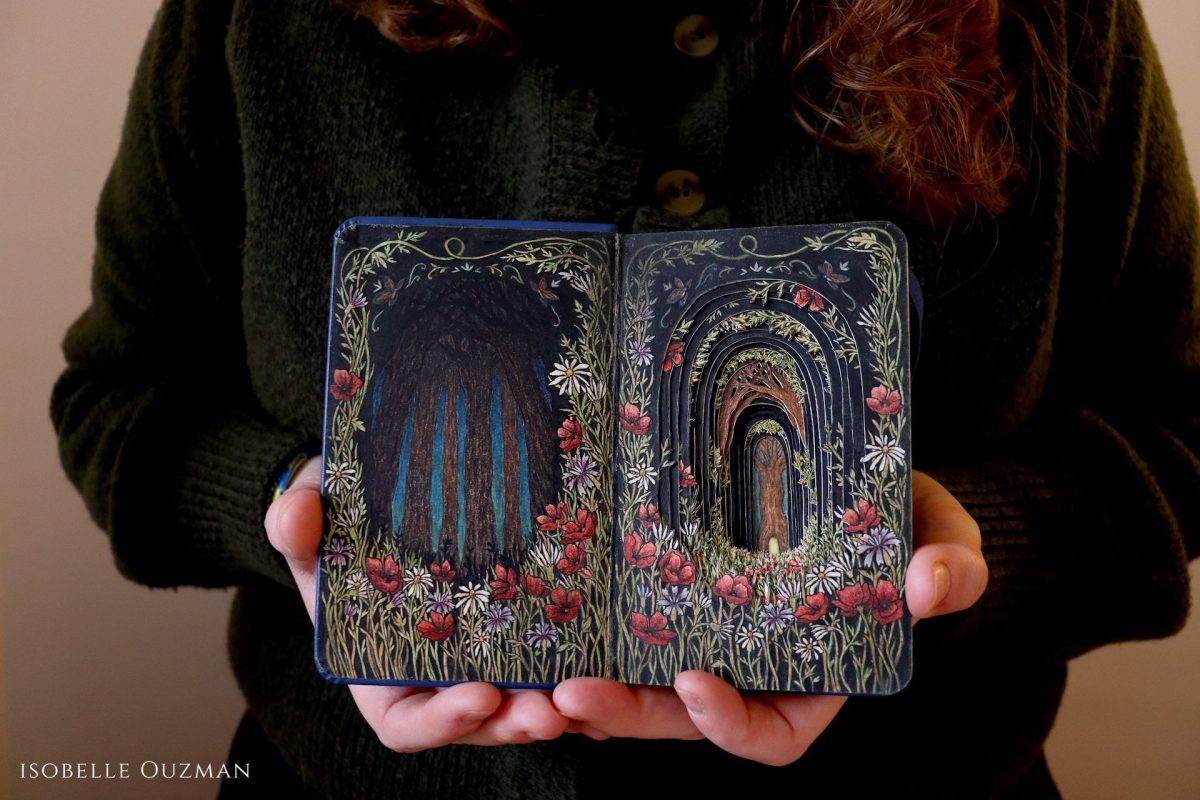
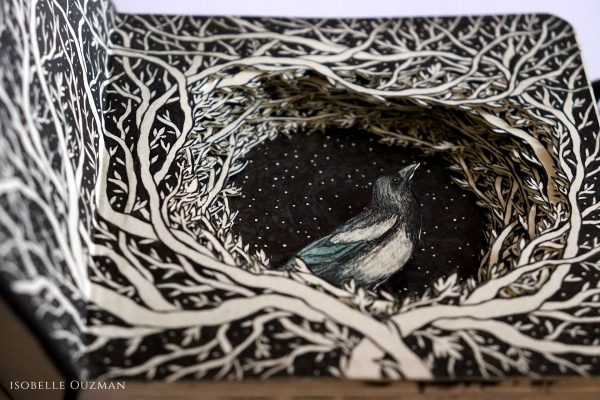
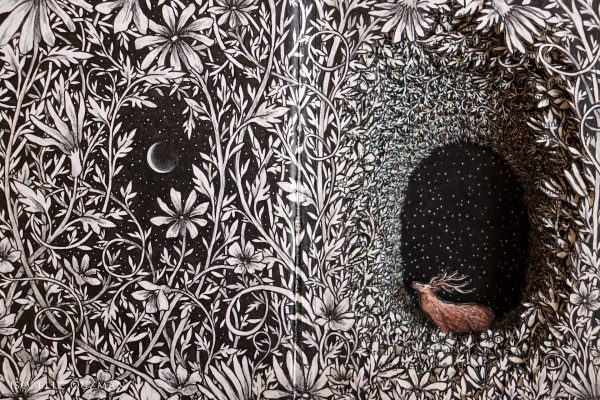
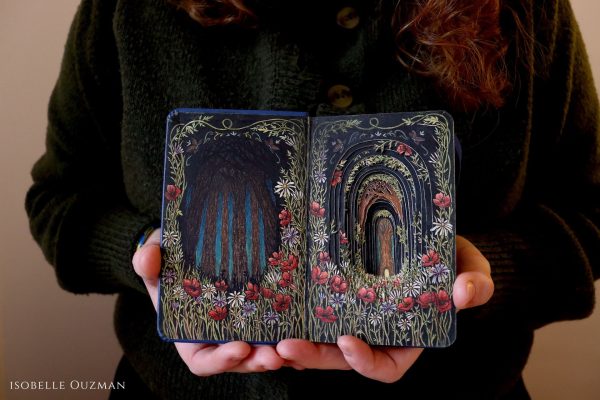
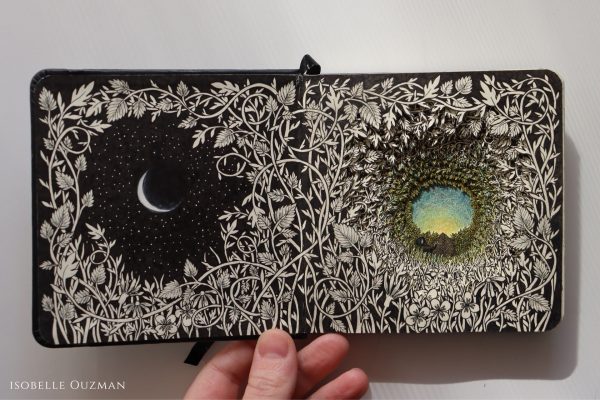
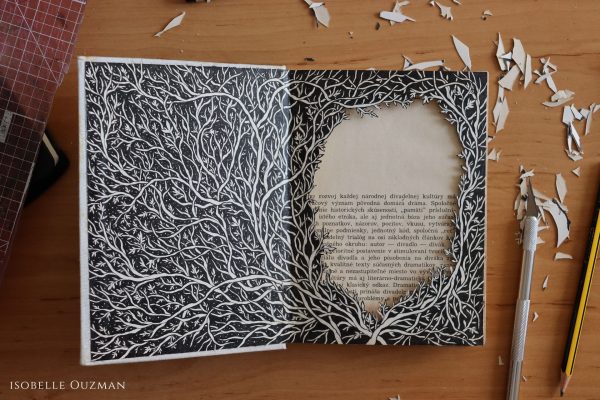
Do you like this artist?
If so, why not write a comment or share it to your social media. Thanks in advance if you can help in this way.